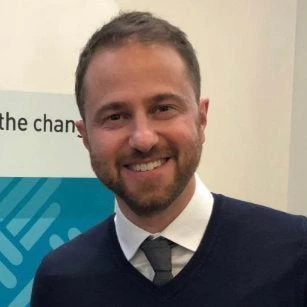It’s not so long since the days when speaking of ‘universal health coverage’ used to provoke shockwaves. Happily, the principle that “… everyone having access to the health care they need without suffering financial hardship” is now widely recognized and documented. And although few countries have achieved this goal in practice, it is clearly within reach, including in low-income countries like Rwanda.
Social protection seems to be on a similar trajectory, with universality now enshrined in commitments and declarations. Yet the provision of universal social protection (USP) is hotly contested — take the debates around Universal Basic Income and Employment Guarantee Programs.
Developing countries are far from achieving USP: between 42 and 82 percent of their populations are not covered by any social protection scheme. So from where can policymakers draw lessons about attaining universality in low and middle-income countries?
What about health’s experience — wouldn’t that offer valuable lessons?
After all, health and social protection face similar quandaries around the role of the state in expanding coverage (in both the formal and informal sectors), in who to subsidize (should that be the poorest only or the middle class as well?), in the composition of overall systems (contributory and non-contributory programs), and funding arrangements (general revenues, payroll taxes). Both use registries of beneficiaries in their operations and, in some cases, even a common registry across sectors.
While country trajectories are seldom linear, recent reviews of practices on universal health coverage may offer relevant insights for social protection.
First, simply striving for universality doesn’t necessarily make the poorest better off. As countries expand coverage, people at the bottom of the distribution should benefit before or at least at the same time as others in society (as well as receiving more support than other population segments). This principle is enshrined in the notion of “progressive universalism”.
Second, targeting and universalism can coexist. Progressive universalism requires information systems that identify and prioritize, during the roll-out process of expansion, the people most in need and who should receive additional support. ‘Targeting’ and progressive universalism are compatible, mutually-reinforcing concepts.
Third, in pursuing universality, several countries may tend to initially develop programs for the poor only. Health programs were often introduced in two ways: via embedment into existing social health insurance agencies, which Ghana, Kyrgyz, Philippines, and Vietnam have done; or through the creation of ad-hoc agencies linked to the Ministry of Health, in the cases of Georgia, India, Indonesia, Peru, and Turkey.
Fourth, focusing on the poor is a stepping stone before expanding it to people who aren’t poor (or are less so) in the informal sector. Also in this case, countries have taken two separate paths in expanding coverage beyond poor people. Some have taken a non-contributory path, extending the use of tax subsidies already provided to the poor to the rest of the informal sector (Argentina, China, Colombia, Mexico, and Thailand). These programs depend mainly on general tax revenues. An alternative path requires families who are not poor and whose income is earned in the informal sector to contribute toward their health coverage (Chile and Costa Rica).
Finally, the road to universality is long and abounding in trade-offs. As countries expand provisions, there are choices made between coverage, adequacy of support, quality of services, and financing. For instance, addressing equity-sustainability trade-offs may involve reforms that reassess heavy reliance on payroll taxes to finance health care for the formal sector. A similar debate is unfolding in social protection with regards to the ‘Bismarckian’ system of payroll-financed social insurance. You can find out more by reading a draft report on The Changing Nature of Work.
However intriguing these lessons may be, they should be interpreted with caution. Social protection is often cross-sectoral while health is a distinct sector. The very definition of universal coverage may also differ — with health framing it as “providing care to everyone who needs it” instead of “providing support to everyone independently of needs”, as it is often interpreted in social assistance.
The case for USP seems at times relatively less crisply articulated than in health — in other words, its economics and politics of universality may be better framed and communicated. Nevertheless, as social protection seems posited to follow health’s footsteps, the latter could be a precious sherpa for the former as it climbs the arduous universality mountain.


Join the Conversation